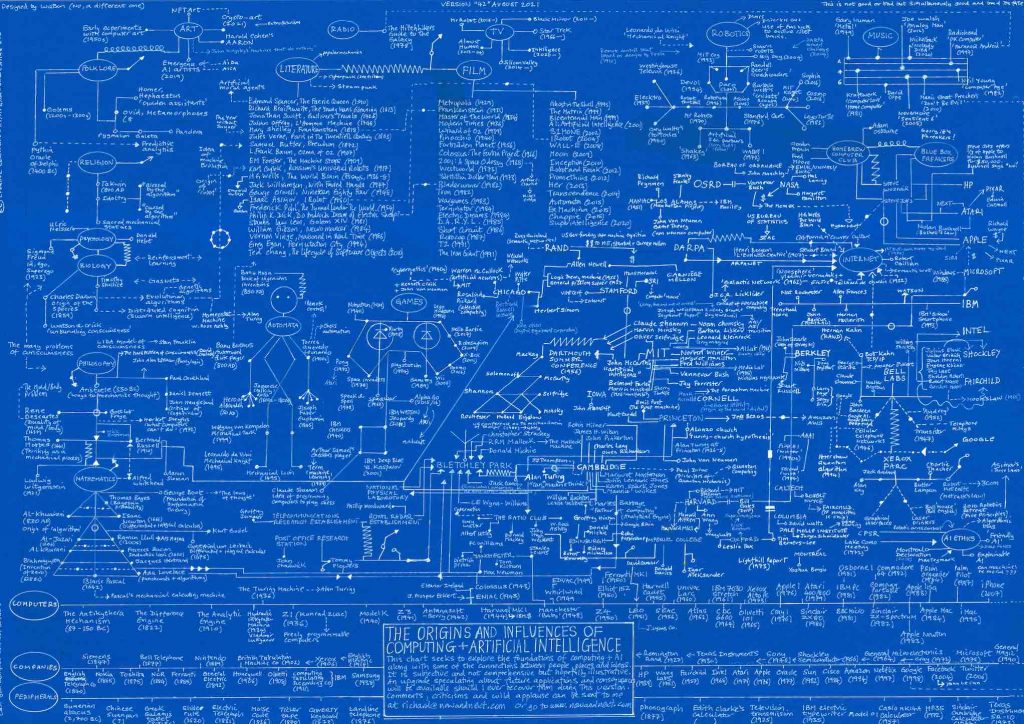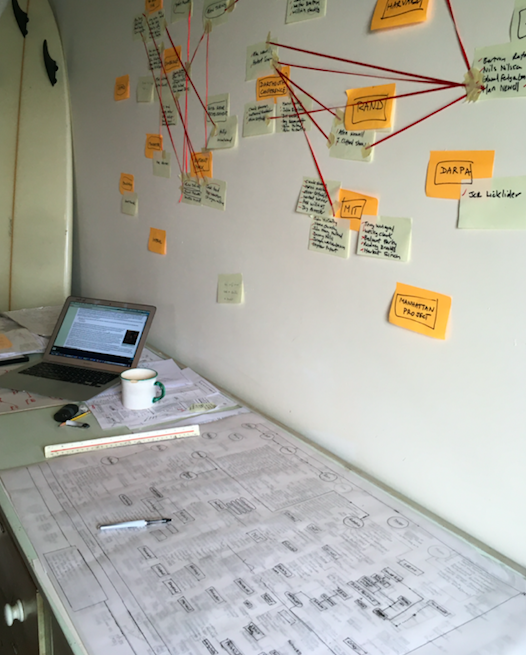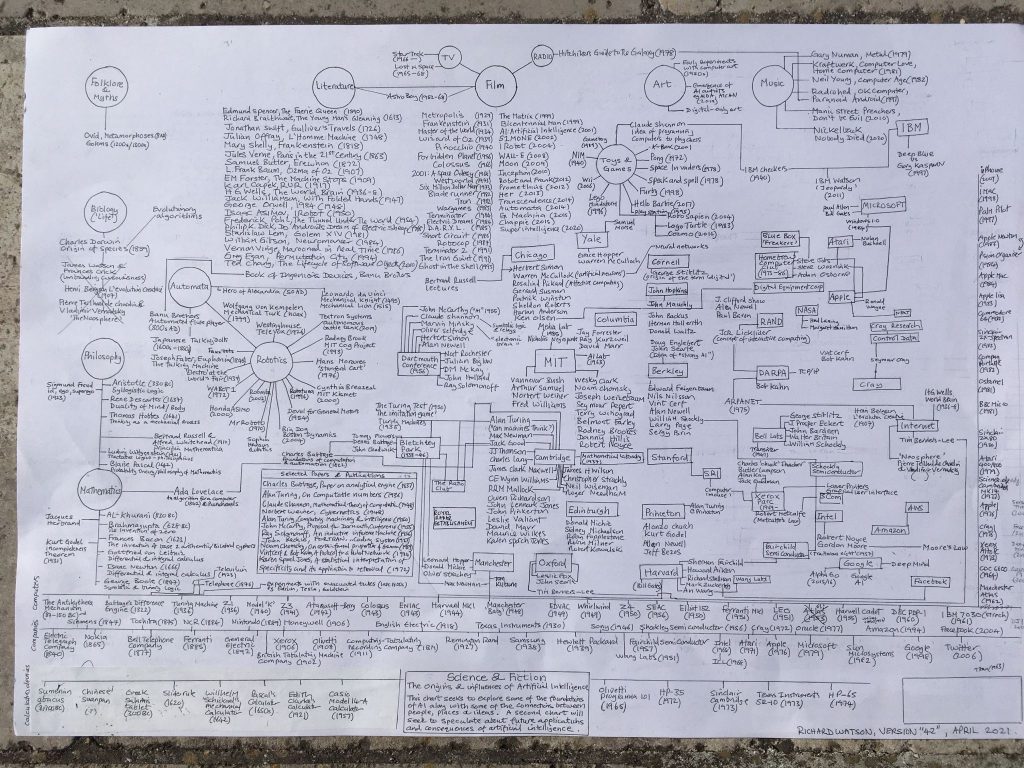A history of computing and artificial intelligence on a single sheet of paper was always a little bit ambitious. Perhaps a little foolish too. Anyway, I’d like to think of this as the equivalent of Joe Cocker singing With a Little Help from My Friends at Woodstock in 1969 – an exhausting yet transcendent moment where mind and body meld together and time stands still. In reality it ended up taking me over and has become a bit of fragmented failure, although maybe one should think of it in quantum terms – simultaneously good and bad, its fate being linked to random events that may or may not occur.
Regardless, it’s been more fun to do than an adult colouring-in book. I did learn quite a bit doing it too (e.g. Nolan Bushnell saying “no” to the offer of 1/3 of Apple Computer for $50,000). It has perhaps laid some foundations to ‘map’ the future of artificial intelligence too. Make what you like of it. If you want to print this ask me for a higher resolution file (which I’ll happily supply for free) or I might print a few large copies myself, so do ask if you want one (smalll charge to cover printing and postage).




